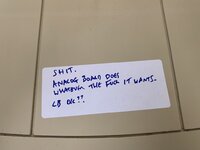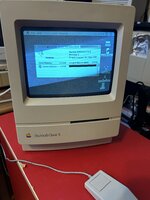svenvendetta
Member
Ok, since I know you could make a coffee table book with posts about the Classic analog boards here's my story so I can share some common misery:
I had both boards on a Classic II recapped by an expert and it was doing well for about 8 months then one day on startup: no chime, just clicking noises from the speaker. My best guess is that the analog board is likely shorting out somewhere with voltages being about half of what they need to be when metering pins for 5 and 12v from the logic board. The clicks go on a cycle with the fan doing a quarter spin every few seconds as it tries in vain to start. Strangely on 2 random occasions it has booted normal with the correct voltages but this is out of many reboots and connection reseats, poking, prodding, etc... Can't imagine the logic board is the culprit but not sure where to even look.
I have deoxit'd the voltage pot and cleaned off the board with iso alcohol. Same thing. Not expecting answers here just sharing the pain but if you got any ideas I am all ears
I had both boards on a Classic II recapped by an expert and it was doing well for about 8 months then one day on startup: no chime, just clicking noises from the speaker. My best guess is that the analog board is likely shorting out somewhere with voltages being about half of what they need to be when metering pins for 5 and 12v from the logic board. The clicks go on a cycle with the fan doing a quarter spin every few seconds as it tries in vain to start. Strangely on 2 random occasions it has booted normal with the correct voltages but this is out of many reboots and connection reseats, poking, prodding, etc... Can't imagine the logic board is the culprit but not sure where to even look.
I have deoxit'd the voltage pot and cleaned off the board with iso alcohol. Same thing. Not expecting answers here just sharing the pain but if you got any ideas I am all ears


